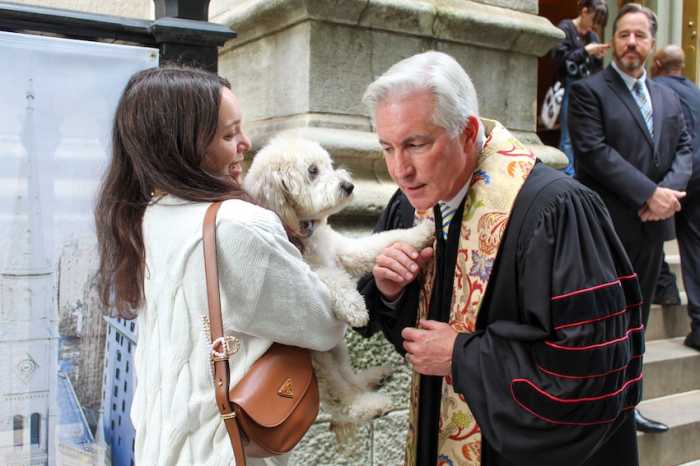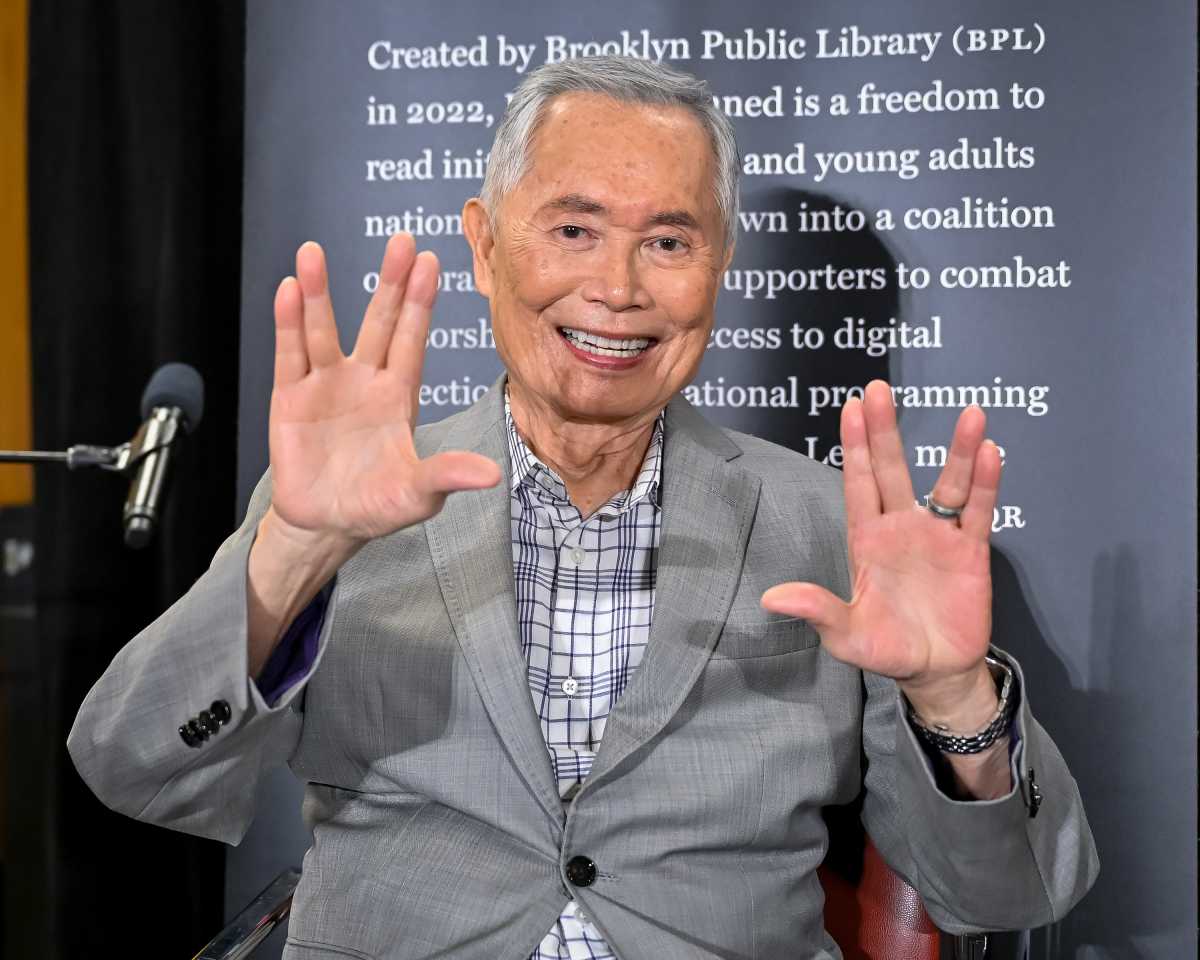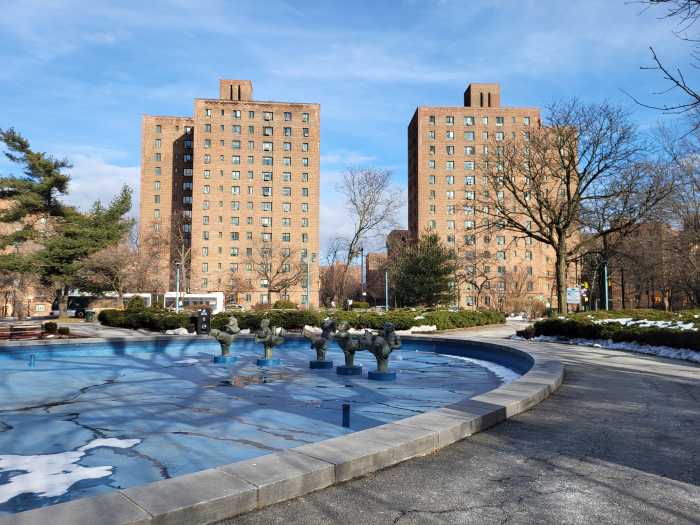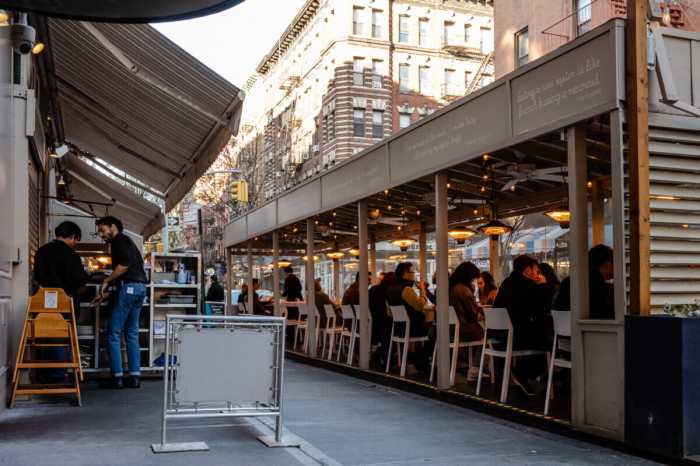By Lincoln Anderson
Community Board 2 has jumped onboard the growing grassroots effort to get New York University to locate one or more secondary campuses outside the Village. The full Greenwich Village community board last Thursday night passed a resolution calling for a halt to “the inexorable N.Y.U.-ization of our neighborhoods” by having the city and university work together to find other areas for N.Y.U. to grow. The vote was overwhelmingly in favor, with just three abstentions.
The board’s resolution suggests several areas the city is currently redeveloping that would be appropriate for a satellite campus, such as Downtown Brooklyn, Long Island City, the Williamsburg/Greenpoint waterfront, Lower Manhattan and Ground Zero, Hudson Yards and Governors Island.
The vote came as a surprise following the C.B. 2 Zoning and Housing Committee meeting the week before that saw the board’s chairperson, Maria Passannante Derr, deem a vote on the issue “premature.” At the time, Derr had proposed a joint hearing by the Zoning and Housing Committee and the board’s Institutions Committee in order to produce a unified resolution. However, two nights before the C.B. 2 full board meeting, the Community Board 3 Housing, Land-Disposition and Zoning Committee upped the ante by unanimously approving a resolution in support of the second-campus proposal.
Adding more momentum to the effort, City Councilmember Rosie Mendez came out in favor of the second-campus concept.
“As a graduate of N.Y.U., I am very aware of that institution’s contribution to our city and region,” Mendez said in her Community Board 2 Report, which her aide John Fout read aloud to the board. “I also believe strongly in contextual zoning and community planning. This relates to all development — private or public. A significant increase in student housing or other facilities has already had and will have an increasingly dramatic effect on both the nature and tenor of this community. I believe the proposal to seek an auxiliary locale for N.Y.U. could be a very viable alternative,” Mendez said, urging C.B. 2 to pass the resolution.
Also, Manhattan Borough President Scott Stringer’s aide Shaan Khan, told Board 2, “At this point, [N.Y.U.] expansion in the Village, it doesn’t seem like it’s benefiting the community or N.Y.U. It makes sense to explore it — why not?” he said of the satellite-campus concept.
In an interview with The Villager a week earlier, asked his view on the proposal, Stringer said, “N.Y.U. has got to be a better neighbor. You can’t run roughshod over a neighborhood. There has to be balance — at the same time, recognizing this is good for the city,” he noted, referring to the university’s beneficial impact on the city’s economy. He added that the $2 billion expansion Columbia is planning Uptown will likely have a larger impact on its surrounding community than anything N.Y.U. currently has in the works.
No N.Y.U. representative attended the C.B. 2 full board meeting. Andrew Berman, executive director of the Greenwich Village Society for Historic Preservation, said he was surprised at the sudden turnaround, and was only notified when he arrived at the meeting that a vote would be taken that night.
The second-campus idea is being spearheaded by a coalition of seven organizations and neighborhood groups, including G.V.S.H.P., Noho Neighborhood Association, Union Square Community Coalition, Greenwich Village Community Task Force, Cooper Square Committee, Coalition to Save the East Village and St. Ann’s Committee.
Before the vote, Bob Rinaolo, chairperson of the board’s Institutions Committee, told Berman he thought it was “a very good resolution,” but wondered why Berman hadn’t initially brought it to the Institutions Committee. Berman said he’d received a response on the idea from the Zoning and Housing Committee, but that it was up to the board to determine the committee to which to assign it. David Reck, the Zoning and Housing chairperson, said he felt it was appropriate his committee had heard the proposal.
Noting that the board previously went on record calling for N.Y.U. to make its long-range development plans public, Reck added, “If it only takes four years to educate people at N.Y.U., why does it take so long to turn out this plan?”
Don MacPherson, a member of the Zoning and Housing Committee, who was angered that the committee had not approved the resolution at its Feb. 9 meeting and had accused the community board of “not representing the community,” made a point of publicly thanking Derr at the full boar meeting for allowing the vote.
Brad Hoylman, another Zoning and Housing member, said of the resolution’s approval, “It seems to be a no-brainer. I’m not surprised that it passed.”
Afterwards, asked why she changed her mind, Derr said, “I reviewed the proposal and it looked good — and I see no reason why it shouldn’t have passed.”
The full board of C.B. 3 is expected to vote on the secondary-campus proposal on Feb. 28. Assuming the East Side/Lower East Side board approves the idea, Berman said the campaign’s next step will be to take their idea to the borough president and City Hall. Berman noted that Village activists feel they have a good relationship with Amanda Burden, chairperson of City Planning, which recently approved the downzoning of the far West Village and is looking at a contextual zoning in the East Village.
“It’s going to be a long haul,” Berman said. “We’ve got to hold N.Y.U.’s feet to the fire to make sure that this is a top priority for their planning process. We’ve got to sit down with the borough president and see how we can work together on this.”
Meanwhile, an article in Washington Square News, N.Y.U.’s student newspaper, quoted students as being “annoyed” at the notion of a second campus. Reported Washington Square News: “Tisch sophomore Caitlin Barid said N.Y.U. facilities are already too spread out across the city, noting that adding anything elsewhere would further detract from the present feel. ‘I get a little annoyed by even the dorms being so far away,’ Baird said. ‘Campus should be more centralized.’ Junior Patrique Akhidenor said traveling to other parts of the city for class would be a distraction. ‘Satellite campuses seem like they would just be an extra annoyance,’ Akhidenor said.”
However, Berman said, “We’re suggesting that the easiest thing to do would be to move a school. We’re not suggesting that your dorm is in one location, your classroom in another or your gym in another, but that you move a discrete school. There are a number of [N.Y.U.] undergraduate and graduate schools, and you could move them.
“In general, we want to see a chunk of the university moved outside of the Village,” Berman explained.
Yet, in the past 30-plus years, the trend has been for N.Y.U. to move, or add, chunks of the university into the Village. The Stern School of Business’s graduate division relocated from the Financial District to the university’s Washington Square campus area in 1992 — where the school’s undergraduate business division had been all along. However, John Beckman, the university’s spokesperson, noted that “when the graduate programs were Downtown, they had 3,900 students; today, there are about 2,900 — 1,000 fewer — grad students.”
Asked for the university’s reaction to C.B. 2 supporting the second-campus resolution, Josh Taylor, a university spokesperson, said, “As we’ve been saying since this proposal first surfaced, N.Y.U. has a new planning team in place that is open to hearing any recommendations that may surface from the community.”





































